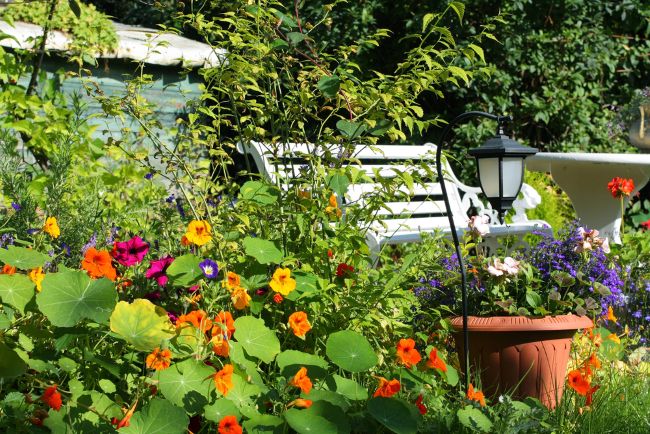Practical Tips for a Healthy, Low-Maintenance Home and Garden

Few things are more rewarding than having a home and garden that look after you as much as you look after them. Our homes should be sanctuaries — places where we can unwind, recharge, and stay connected to nature without being tied to constant chores. With some planning, clever design, and sustainable habits, you can enjoy a beautiful, low-maintenance home and garden that practically takes care of itself.
Creating a Healthy Home Environment
A healthy home starts with clean air and a comfortable atmosphere. Improve indoor air quality by introducing houseplants that naturally filter pollutants — classics like spider plants, Boston ferns, and peace lilies are reliable and easy to care for. They don’t just purify the air; they also add a calming, natural aesthetic to your living spaces.
Routine upkeep also makes a huge difference. Booking local planned preventive maintenance services — such as annual boiler servicing, pest control, and professional deep cleans — helps keep your home running smoothly and hygienically. Preventive maintenance like this is often more affordable in the long run than dealing with emergency repairs.
Given the unpredictable UK weather, good insulation is a must. Properly insulating your loft, walls, and windows helps stabilise indoor temperatures, cutting energy bills and lowering your carbon footprint. Many local councils even offer grants or advice on improving home energy efficiency, so it’s worth checking what’s available in your area.
Designing a Low-Maintenance Garden
Your garden should be a pleasure, not a chore. The secret to an easy-care outdoor space lies in smart planting and practical design. Choose perennials instead of annuals — they come back year after year, saving you time and effort. Hardy UK favourites like lavender, salvia, and catmint thrive in our climate and offer long-lasting colour and fragrance with minimal fuss.
Consider installing a drip irrigation or self-watering system to keep plants hydrated without daily watering. Mulching flowerbeds with bark chips or compost will lock in moisture, suppress weeds, and nourish your soil naturally.
If you’d rather spend weekends relaxing than mowing, replace part of your lawn with decorative gravel, wildflower turf, or low-growing ground covers. These eco-friendly options attract pollinators while slashing your maintenance time.
Energy-Efficient Homes and Smarter Habits
Energy efficiency isn’t just good for the planet — it’s good for your wallet, too. Choose A-rated appliances when upgrading your washing machine, dishwasher, or fridge. Simple everyday habits, like switching off devices at the plug, using LED bulbs, and making the most of daylight, all reduce energy use.
Setting your thermostat a degree or two lower, or using a smart heating control, can also cut costs without sacrificing comfort. When your energy tariff is up for renewal, take the opportunity to compare greener, more affordable options.
Choosing Durable Furniture and Fixtures
Invest once, enjoy for years. Selecting high-quality, durable materials for furniture and fittings saves you the hassle and expense of constant replacements. Solid wood, metal, and composite surfaces tend to outlast cheaper alternatives and withstand everyday wear and tear.
When fitting kitchens or bathrooms, choose reputable brands and sturdy fixtures — these areas endure the most use, and cheap fittings often end up costing more in the long run. It’s also worth ensuring your doors and locks are in good working order. Regular maintenance from local locksmiths can extend their lifespan and help keep your home secure without the need for costly replacements later on.
Encouraging Wildlife and Self-Sustaining Spaces
A wildlife-friendly garden supports the local ecosystem and makes maintenance easier in the long run. Choose nectar-rich plants to attract bees and butterflies, hang bird feeders or nesting boxes, and add a small pond or log pile to provide shelter for amphibians and insects.
These natural visitors will help control pests and keep your garden thriving without the need for chemicals or constant intervention. You’ll be surprised how lively and balanced your garden becomes when nature is allowed to lend a hand.
In Summary
Creating a healthy, low-maintenance home and garden doesn’t mean compromising on beauty or comfort. With a few smart choices — sustainable planting, energy-efficient upgrades, and regular preventive maintenance — you can build a home that feels peaceful, practical, and perfectly attuned to your lifestyle.
So, take the time to nurture your space now, and it will reward you for years to come — giving you more time to relax, recharge, and enjoy the simple pleasures of home life.


